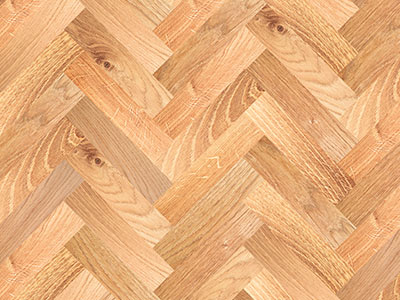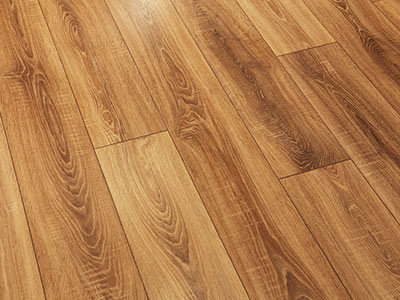Back to Flooring Products
Parquet vs Hardwood Flooring: How to Choose the Right Wood Floor for Your Home

Choosing to install a wooden floor is always a smart investment, adding warmth, character, and long-lasting value to your home. However, once you've made that decision, the next question arises: what type of real wood flooring should you choose?
Real wood floors are available in several forms, including solid wood, engineered wood, and parquet flooring. If you’re aiming for a timeless and elegant look, the choice often narrows down to hardwood vs parquet flooring.
But what is the actual difference between these two options? And more importantly, how can you ensure you’re making the right decision for your space? In this guide, we’ll compare parquet flooring vs hardwood flooring, explore their unique features, and help you make an informed choice.
What Is Parquet Flooring?

Parquet flooring is one of the most traditional and timeless options when it comes to real wood flooring. It holds historical significance as the first type of wood flooring ever installed, famously in the Hall of Mirrors at the Palace of Versailles. Once a symbol of luxury for wealthy families, parquet has become accessible to all homeowners seeking elegance and charm.
Unlike large solid wood floorboards, parquet floors are made from smaller wooden blocks, cut from a single piece of timber. These blocks are then arranged in geometric patterns, creating a unique mosaic-like effect.
Popular Parquet Flooring Patterns
- Herringbone – The most popular and classic choice
- Chevron – Similar to herringbone but with angled ends
- Basket Weave – A pattern resembling woven baskets
- Custom Artistic Patterns – Intricate designs requiring expert craftsmanship
In most homes, you’ll commonly see simpler patterns like herringbone, while more intricate designs are reserved for luxurious or bespoke interiors.
What Makes Parquet Flooring Unique?
What sets parquet flooring apart from other wood flooring types is the distinctive patterned layout. Structurally, it’s very similar to solid wood flooring — crafted from real wood — but assembled in a mosaic fashion.
Like other hardwood flooring options, parquet is known for its durability, longevity, and ability to be sanded and refinished. With proper care, parquet floors can last up to a century, maintaining their beauty for generations.
Challenges of Sanding Parquet Flooring
While sanding parquet floors is essential for maintenance and restoration, it requires a high level of expertise. The challenge arises because parquet blocks are laid in different directions to create the pattern. This increases the risk of sanding against the grain, potentially damaging the wood surface.
Therefore, it is crucial to hire an experienced parquet floor restoration specialist who understands the specific techniques needed to sand and refinish parquet flooring without compromising its integrity.
What Is Solid Wood Flooring?

Solid wood flooring, also known as hardwood flooring, is crafted by cutting floorboards from a single piece of timber. This makes it one of the most classic and authentic real wood flooring options, known for its timeless appeal and natural beauty.
Advantages of Solid Wood Flooring
Hardwood floors offer numerous benefits, making them a preferred choice for many homeowners:
- Durable and long-lasting – Can last for decades with proper care
- Solid and sturdy construction
- Wide variety of wood species, colours, and textures
- Can be sanded up to 6 times during its lifetime for a like-new appearance
The ability to sand and refinish solid wood floors multiple times is a significant advantage. Each resanding removes surface imperfections, refreshes the finish, and extends the floor's lifespan.
Limitations of Solid Wood Flooring
Despite its many benefits, solid wood flooring has certain limitations due to its natural characteristics. Wood's porous structure makes it sensitive to:
- Moisture and humidity fluctuations
- Temperature changes
As a result, solid wood floors are not recommended for:
- Bathrooms and basements
- Kitchens with high humidity
- Installation over concrete subfloors
- Homes with underfloor heating systems
For environments where moisture and temperature are a concern, engineered wood flooring is often a more stable and suitable alternative.
Choose the Right Wood Floor for Every Room
While parquet flooring and solid hardwood flooring share many characteristics, neither is recommended for areas prone to moisture problems. For spaces like bathrooms, basements, or kitchens, engineered wood flooring is a more stable and suitable choice.
When comparing parquet flooring vs hardwood flooring, the key difference lies in their visual impact and how they fit into your interior design. Choosing between the two depends largely on:
- The size and shape of the room
- Your style and taste
- The desired atmosphere and interior concept
When to Choose Solid Wood Flooring
Hardwood floorboards are ideal for larger, open spaces. Thanks to the availability of wide and long planks, solid wood flooring can enhance the sense of spaciousness in big rooms. Moreover, with a vast range of wood species, colours, grains, and textures available, you can tailor your floor to match your personal preferences and design goals.
For smaller spaces, opting for light wood flooring can make rooms feel more open and airy. This visual effect is perfect for homeowners aiming to create a bright and spacious ambiance.
When to Choose Parquet Flooring
Parquet wood flooring is suitable for most rooms in the house, except for very small or narrow spaces. In confined areas, the intricate patterns of parquet can appear too busy, potentially overwhelming the room’s aesthetics.
Parquet floors are often associated with a formal and classic style, but they can also be adapted to modern and contemporary interiors. The choice of pattern, colour, and finish will determine whether your parquet floor leans toward traditional elegance or sleek modernity.
Ultimately, whether you choose parquet flooring or solid wood flooring, the decision should reflect your lifestyle, the room’s purpose, and your design vision.
Parquet Flooring vs Hardwood Flooring: Quick Comparison Table
| Feature |
Parquet Flooring |
Solid Hardwood Flooring |
| Material |
Solid wood blocks arranged in geometric patterns |
Planks cut from a single piece of timber |
| Visual Appeal |
Classic, decorative, suitable for formal & modern interiors |
Natural, traditional look enhances spaciousness |
| Best for Room Size |
Medium to large rooms; not ideal for very small/narrow spaces |
Ideal for large open spaces; works in most room sizes |
| Durability |
Highly durable and long-lasting with proper care |
Extremely durable, can be sanded multiple times |
| Maintenance |
Requires skilled sanding due to pattern direction |
Easier to sand and refinish uniformly |
| Installation Areas |
Living rooms, hallways, and dining areas |
Living rooms, bedrooms, and wide corridors |
| Not Suitable For |
Bathrooms, basements, high-moisture areas |
Bathrooms, basements, kitchens, and underfloor heating |